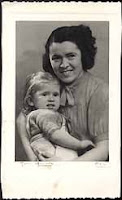Yad Vashem in Israel
...
The Yad Vashem, the Holocaust History Museum in Israel, was simply incredible on so many levels.
It occupies over 4,200 square meters, most of which is underground. It presents the Shoah (Holocaust) from a unique Jewish perspective, emphasizing and storytelling the experiences of the individual victims through original artifacts, survivor testimonies and personal possessions.
Its linear building spikes upward with its skylight protruding through the mountain ridge. A series of galleries to the sides of a long, narrowing hallway portray the complexity of the Jewish situation. The unique settings, spaces with varying heights and different degrees of light, as well as the ground-level media accentuate the focal points of the narrative and build tension as individuals' stories unfold.
The Yad Vashem, the Holocaust History Museum in Israel, was simply incredible on so many levels.
It occupies over 4,200 square meters, most of which is underground. It presents the Shoah (Holocaust) from a unique Jewish perspective, emphasizing and storytelling the experiences of the individual victims through original artifacts, survivor testimonies and personal possessions.
Its linear building spikes upward with its skylight protruding through the mountain ridge. A series of galleries to the sides of a long, narrowing hallway portray the complexity of the Jewish situation. The unique settings, spaces with varying heights and different degrees of light, as well as the ground-level media accentuate the focal points of the narrative and build tension as individuals' stories unfold.
The story of Esther is one that I found especially hard to comes to terms with. She had a husband and a 2 year old son named Richard (actual picture of them below). We saw bits and pieces of her life through photographs, artifacts and letters as we went through the galleries. By the time we were 3/4 of the way through the tour, Esther Frenkel was sent from Pithiviers via Drancy to Auschwitz-Birkenau. As a desparate measure, she threw a postcard intended for her relatives in Paris from the train carriage that was taking her to her Auschwitz-Birkenau. Brought to its destination by an unknown person, the postcard reads (and the tour person read aloud):

My dear family, Friday [date illegible]
I am on the train. I do not know what has become of my Richard. He is still in Pithiviers. Save my child, my innocent baby!!! He must be crying horribly. Our suffering is nothing. Save my Richard, my little darling. I can’t write. My heart, my Richard, my soul, are far away and no one is protecting my little two-year-old boy. To die, quickly, oh, my child! Give me back my Richard.
Esther
I felt at that moment that I could no longer continue with the museum tour. I could no longer do it. I could not stop crying. The lump in my throat was painful. I saw myself as Esther. I saw my daughter, Neviyah, as her Richard. It is unimaginable. Literally. I felt sick the moment I entered the museum but now I felt like I was going to throw up. I continued on with the tour despite my instinct to turn and run far away from the museum.
Near the end of the galleries is the Hall of Names—a spiral repository for the Pages of Testimony of millions of Holocaust victims. From there, the natural progression to end the tour is outside, on a balcony, overlooking Jerusalem. It is surreal after being amongst the metal, blackness, dimmed lights, death and sorrow to suddenly be outside with this beautiful view. It is a symbol of hope. Hope.
Esther Frenkel and baby Richard Frenkel were on my mind the rest of the night and to some degree have never left me. As soon as we returned to the hotel, I did a shot of whiskey, went to my room and tried to sleep. Thick was the feeling of disgust for the world. Heavy was the sadness and despair.
This museum was an experience.
...
Near the end of the galleries is the Hall of Names—a spiral repository for the Pages of Testimony of millions of Holocaust victims. From there, the natural progression to end the tour is outside, on a balcony, overlooking Jerusalem. It is surreal after being amongst the metal, blackness, dimmed lights, death and sorrow to suddenly be outside with this beautiful view. It is a symbol of hope. Hope.
Esther Frenkel and baby Richard Frenkel were on my mind the rest of the night and to some degree have never left me. As soon as we returned to the hotel, I did a shot of whiskey, went to my room and tried to sleep. Thick was the feeling of disgust for the world. Heavy was the sadness and despair.
This museum was an experience.
...
Comments